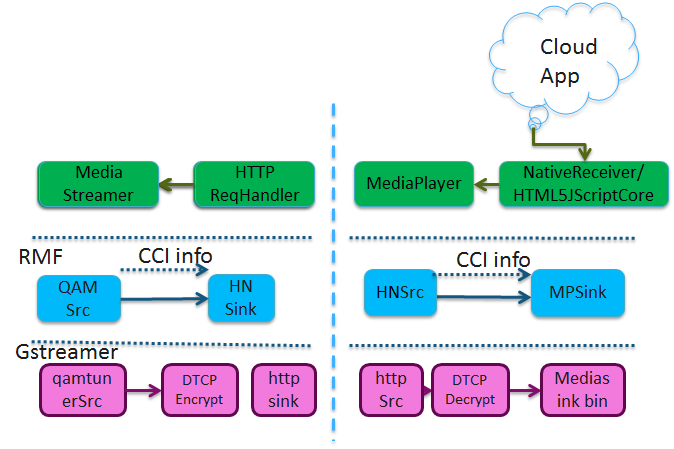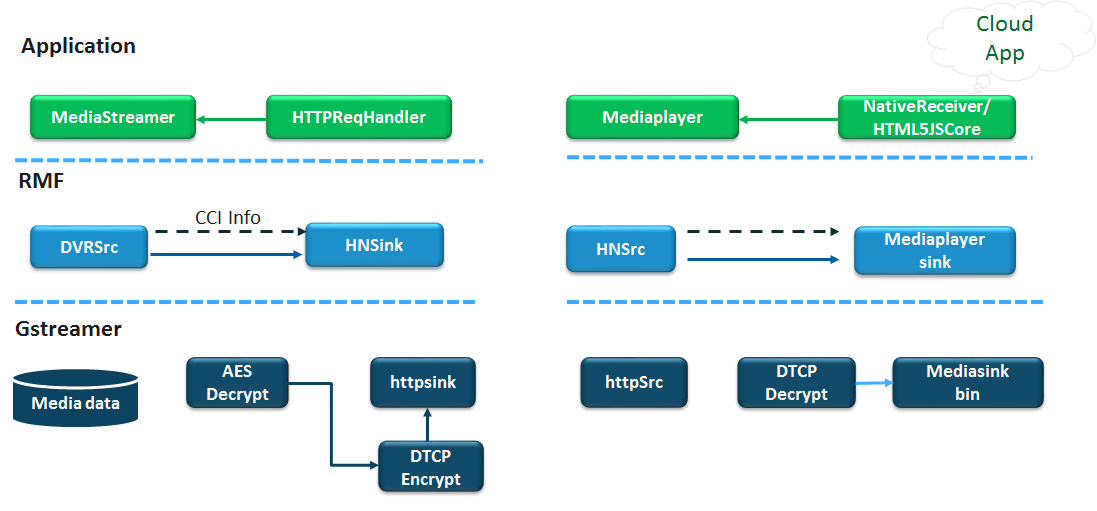
All streaming will be done by the Media Streamer in the Gateway (Hybrid) device. The RMF source element in the Client box will receive the data and do the processing.
Here all the data is streamed from the media streamer through Home networking sink. HNSrc in the Client will receive the data from HNSink and playback using the RMF pipeline.

The sequence diagram for the live streaming is as follows.

In this use case, the Media Server requests the DVR Manager to share a Recording corresponding to a SourceId, if no Recording is available the QAM Source is queried for an instance with the same SourceId. DVR manager creates a Recording with a unique ID along with DVR Sink and connects the QAM Sources to the DVR Sink. DVR manager shares the QAM Source instance with the media server. Media Server connects the QAM Source to the HN Sink.
A TSB(Time Shift buffer) is a recording with a special property called maximum duration. When maximum duration reached during TSB, a sliding time window will be applied for recording.
The clear SPTS from QAM Source is AES encrypted by the DVR sink before it’s saved in the HDD.

The block diagram for the scenario as follows.

In case of recording, the stream data is taken from the RMF Source elements. AES encryption algorithms are applied before the stream is saved in the storage media by the DVR Sink.
In the case of recording media playout, the stream data is taken by the DVR Source. AES decryption algorithms are applied before streaming to the Media Player Client. A DTCP-IP encryption will be applied to the AES decrypted stream. DTCP-IP decryption will be applied by the HN Src in Client.
The sequence diagram for the DVR playback is as follows.

In case of recording, the stream data is taken from the RMF Source elements. AES encryption algorithms are applied before the stream is saved in the storage media by the DVR Sink.
The elements involved in the process are as follows.
The Recorder component in the Hub device maintains the entire recording list. The main functionalities of the recorder are as follows.
The overall recording process will be as follows.
